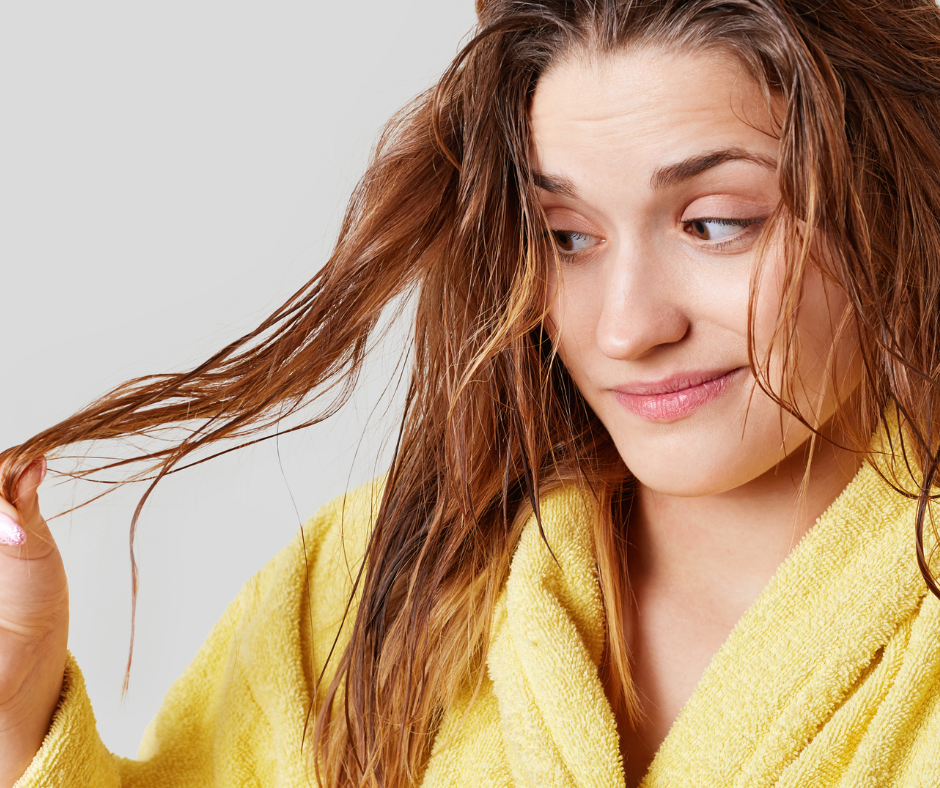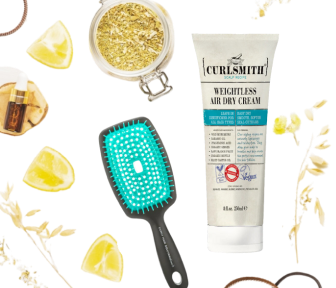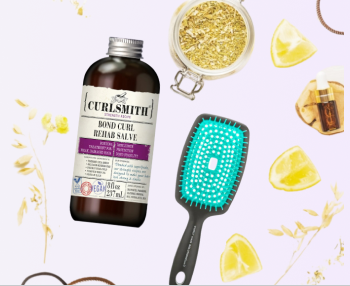You'll have to take my word for it: I know all the ins and outs of caring for and styling coarse hair, and I’m spilling everything you need to know. So, keep reading!
How to Tell If Your Hair Is Coarse
Before we jump in, let’s clear something up: coarse hair and thick hair are not the same thing. A lot of people mix them up, but they’re talking about two totally different things. When we say thick hair, we’re usually talking about density - how many strands of hair you have growing per square inch of your scalp.
Coarse hair, on the other hand, refers to texture, which is all about the thickness of each strand.
And honestly, texture is one of the most important things to know about your hair. Right after porosity and density, it’s what helps you figure out which products will work and which techniques to try. It really is that important.
Not sure if your hair is coarse? Here are two simple ways to check:
1. The feel test:
Take one strand of hair and roll it between your fingers. If it feels strong and noticeable, it’s likely coarse. (Conversely, if you can barely feel it, it is probably fine).
2. The thread comparison:
Lay a strand of your hair next to a piece of sewing thread.
If your hair is thicker than the thread, that’s a sign it’s coarse.
Once you know your texture, everything else gets easier, from picking products to building a routine that works.
Caring for Your Coarse Hair: A Simple Care and Styling Routine
Coarse hair tends to dry out and frizz more easily because moisture doesn’t absorb as easily into the strands. That’s why it does best with a routine that focuses on adding moisture and lasting hold.
Here’s what that looks like:
Start with a Co-Wash
Now, co-washing isn’t for everyone. It’s not usually recommended for finer hair types, looser curls, or those with sensitive scalps. But if you’ve got coarse hair? You’re one of the best candidates for it.
Co-washing is short for “conditioner washing,” and it basically means using a cleansing conditioner instead of shampoo. These products are thick, creamy, and don’t lather. They’re gentler than shampoo but still more cleansing than your regular rinse-out conditioner, while being just as hydrating.
Some great options to try are:
How to do it:
-
Rub the product between your palms to spread it evenly.
-
Using your fingertips (not nails), gently scrub your scalp in small circles, starting at your forehead and working your way back.
-
Add more product if needed, then do the same at your temples and the back of your neck, working up toward the crown.
-
When rinsing, keep massaging your scalp to help remove buildup completely.
Use a Good Rinse-Out Conditioner
You might be thinking, “Wait, didn’t I just use a co-wash? Isn’t that the same thing?”
Not exactly!
It’s the same idea, yes, but the purpose and technique are different. When you’re co-washing, the goal is to clean your scalp. That means really getting in there, scrubbing with your fingertips, and rinsing thoroughly to remove dirt, oil, and buildup.
Conditioning, on the other hand, is all about your strands - specifically the mid-lengths and ends. This is where you focus on adding moisture, slip, and softness to your hair. A good sign you’re doing it right? Your curls should feel like slippery, slimy seaweed (sounds weird, but it means you’ve conditioned properly).
Be Sure to Detangle
Once your hair has that slimy feel, it’s time to detangle. Start with your fingers, working gently from the ends upward toward the roots.
If you need a bit more help, reach for a tool that works for you, like a wide-toothed comb, a Wet Brush like the Curl Keeper Flexy Brush or Curl Warehouse Super Detangling Brush, a Tangle Teezer, or a Denman brush. These are all great options for easing out those stubborn knots without causing breakage.
Add a Leave-in or Curl Cream
Next up: leave-in conditioner or curl cream, or both.
Leave-ins help keep your hair hydrated between wash days, offering lasting moisture throughout the day. Curl creams, meanwhile, provide moderate conditioning and a light hold to help define and shape your curls.
Some curl cream faves include:
For leave-ins, try:
And here’s the important bit: if you’re planning to leave any conditioner in instead of using a leave-in conditioner, it can’t be from your co-wash. Co-wash should always be rinsed out completely from your scalp.
Lock It In With Gel
When it comes to coarse hair, the golden rule is this: go light on cleansing and strong on hold. That combo is what really brings out the best in your curls.
And when we’re talking about strong holds? Gels are at the top of the list. They help lock everything in, keep definition in place, and give your curls the structure they need to last. Learn more about how Gel works here.
Here are a few strong hold gels worth checking out:
If there’s one thing that matters even more than the products you use, it’s your technique. That’s where the real magic happens. We’ve put together a full guide on styling methods to help you get the most out of your curls.
Seal It with Oils
Fine hair can get weighed down pretty quickly by heavy oils or too much product but coarse hair? It handles them much better. So don’t be shy about adding oil treatments into your routine.
Oils bring shine, help with slip, and seal in moisture. Some even go the extra mile by penetrating the hair shaft to nourish from within.
Keep in mind that most commercial oil products contain a blend of oils, so they may not be fully penetrating or sealing.
Here are a few to consider:
-
Penetrating oils (great for improving elasticity and keeping hair feeling conditioned): Coconut, olive, sunflower (light), avocado (light), palm kernel, and babassu (light).
-
Sealing oils and butters (ideal for locking in moisture): Shea butter, jojoba (light), rice bran, Jamaican black castor, and grapeseed (light).
Extra Tips to Remember:
-
Make deep conditioning a regular habit. It’s one of the most important things you can do for coarse hair.
-
Always follow shampoo or co-wash with a conditioner. If you tend to skip this step, consider this your gentle reminder—don’t.
-
You might want to try co-washing exclusively or you might not. Another great option is using a low-poo (aka low-lather or sulphate-free shampoo). They cleanse more than a co-wash but are less conditioning. Think of them as the middle ground between co-wash and clarifying shampoos.
-
Hot oil treatments are a great add-on. You can use them as a pre-poo: just warm up your favorite oil (or a mix), apply it to your hair before a wash.
-
Don’t be afraid to layer your products depending on what your hair needs. Oils can be used as a final step to seal in moisture and scrunch out a gel cast.
-
Refreshing is your friend. It’s a great way to rehydrate, smooth, and condition your curls between wash days as the week goes on.
-
Wearing silk or satin headwear or using a satin pillowcase at night can make a big difference for your curls.








